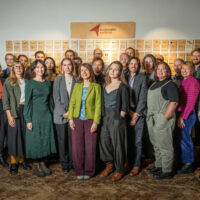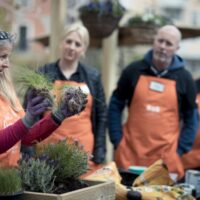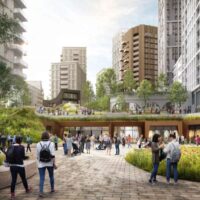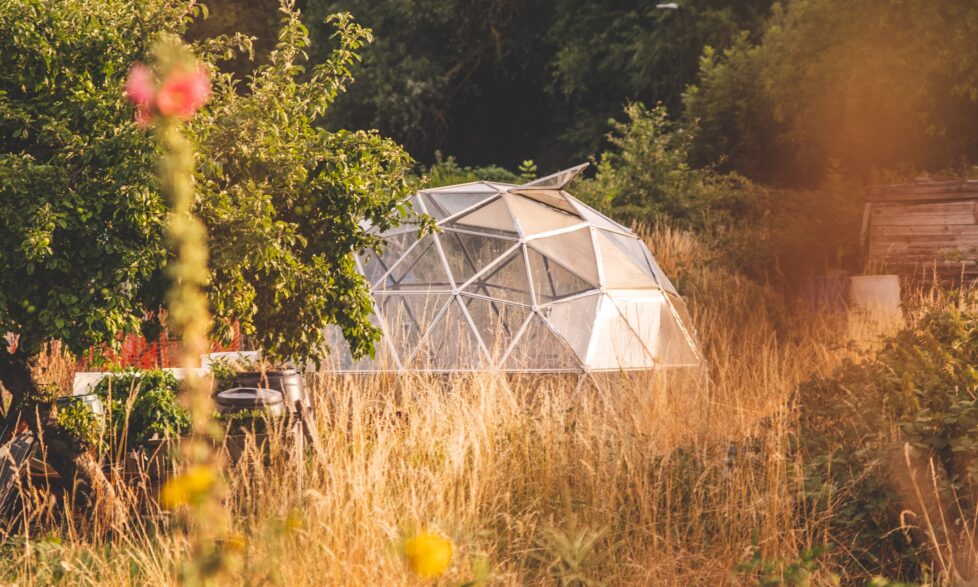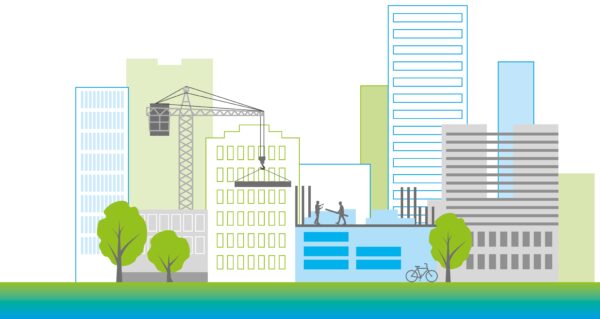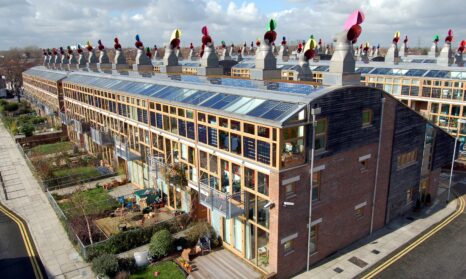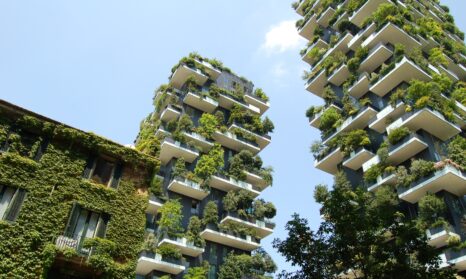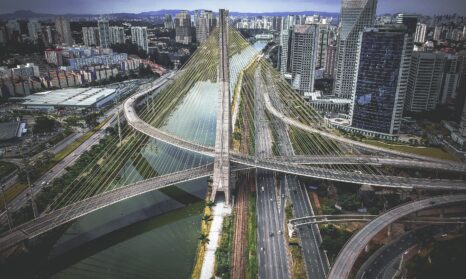Why built environment professionals are on the frontline of healthcare
This January, roughly 9 million British people will have committed to living more healthily. Statistics suggest that 80% of people making resolutions to move more or eat better will have relinquished this goal by March. Many will attribute this failure to a lack of willpower, or to cold winter nights that aren’t made for exercise. Not many will consider that the design of their home and community could be a reason they need to make, and fail to keep, these pledges.
As professionals working to design, build and maintain the places where people live, it could be argued that planners, developers, architects and builders are on the frontline of healthcare provision. Through our work, we can help people become healthier and happier. Here are four ways we can do this.
We can plan infrastructure around people, not cars
This includes shared spaces and car-free streets. Cars don’t have to be parked directly outside a house – in fact, if people walk past their bike or a bus stop on the way to their car, they will be less likely to use their car. By placing car parking spaces towards the outside of a development, streets are safer for children to play and for people to socialise.
We can make sure developments include ample play areas, parks and greenspaces, located a short, safe, car-free walk from front doors, rather than cut off by busy roads. We can link homes to local centres by cycle lanes and build jogging and walking routes around housing developments.
We can provide space for people to grow their own food
Research has found that creating access to fresh fruits and vegetables through community-growing schemes encourages healthier eating. At One Brighton, our 172-home scheme in the centre of the city, we provided mini-allotments at roof level. These were one of the most successful features of the development - our only regret was not having provided more.
This success led to a Planning Advice Note by Brighton and Hove City Council which encouraged other major residential development plans in the city to accommodate space for food growing and urban horticulture.
We can foster community and neighbourliness
We pretend that Twitter, Facebook and other demons of technology have made us more sociable, but in fact the opposite is true. Not only did our rooftop allotments encourage growing healthy food, they also created opportunities for residents to meet up and talk to one another.
Our urban spaces must offer people the chance to interact face to face, both deliberately and accidentally, outside and inside. Multifunctional community centres can be used for yoga at dawn, a crèche in the morning, bridge club in the afternoon and community meetings in the evening. A public square can provide space for street parties and impromptu barbecues.
Developing a sense of community is crucial to happiness and reducing loneliness. At BedZED eco-village in south London, people know on average 20 of their neighbours by name, while the local average is 8. Residents often cite the sense of community as their favourite aspect of the development. A mixed and diverse community that is active throughout the day will also see fewer incidences of crime.
As professionals working to design, build and maintain the places where people live, it could be argued that planners, developers, architects and builders are on the frontline of healthcare provision. Through our work, we can help people become healthier and happier.
We can design warm, comfortable, healthy homes
More and more people are living in homes that are making them ill – from mould, damp and cold. Indoor air pollution from chemicals is a growing concern.
Housebuilders can build homes that are airtight and well-ventilated, that are bright and naturally lit, that are warm without overheating. We can specify low-VOC paint and build using natural, renewable and non-toxic materials.
While achieving the above requires a rather different approach to building the homes and communities than we generally see today, it can be done – we’ve seen it happen at the developments we have worked on around the world. It requires commitment from local authorities, architects and housebuilders. And building communities in this way won’t just benefit the end user. People will want to live in these places, meaning faster sales, more valuable plots and a better reputation for the project team. It’s win-win.
We have a responsibility to design homes, streets and cities that facilitate and encourage healthy lifestyles. We’ll know we’ve been successful when, in ten years’ time, the most popular New Year’s resolution is something other than getting healthy.
The UN Sustainable Development Goals (SDGs) were agreed by more than 190 governments in 2015 with the aim to end poverty, protect the planet and ensure prosperity for all. Goal 3 seeks to ensure healthy lives and promote wellbeing for all.
Learn more about how we can help you build developments that are better for people and the planet.
This blog was originally published on Ecobuild on 30 January 2017
Build a better future: the built environment and the Sustainable Development Goals
Built environment companies are struggling to get to grips with the Sustainable Development Goals. So we've created an easy-to-digest guide with practical advice on how to get started. Let's build a better future together
Download PDF